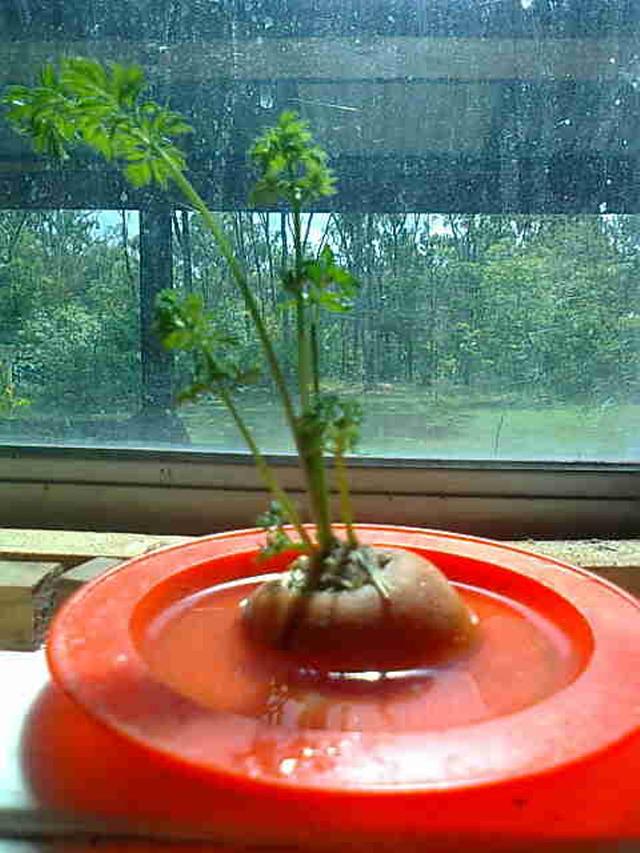Food or Rubbish 6
Food or Rubbish 6
We will look at another aspect of food - waste. We have 7 billions people on earth to feed. We destroy (rain) forests that cover mountains and valleys. We disrupt biodiversity that has been for millions of years interlinking lives in chaotic complexity. We aim first to grow enough food to feed ourselves and then to sell excesses to wider markets for (money and) goods and services for comfort and wealth. And we are stuck on wealth.
[Some kiwanos (horned melons) - very common food in Africa are quite nutritious in salads or as fruit deserts. Peel thorns off ;-) ]
In 'Waste Not, Want Not' (pp30-55, National Geographic March 2016) is a story of food waste and of a man's mission to feed the world with food deemed waste by our growers and markets. On pages 38-39 an infographic tells of 20% of food lost before it leaves the farm gates, and 19% of food we buy is lost before it gets to our dining table. From the farm gates to wholesalers to retailers 14% of food is lost in transport, in storage, on display and so on before it checks out into our basket to take home. That is a total waste of 53% of food - enough to feed 2 billions people - lost, wasted, and adding burden to produce more.
There are wastes of energy, wastes of resources, wastes of opportunities, and wastes of lives arise together with this waste of food.
[Makrut limes are not quite versatile - not in bulk anyway. But they are good hair shampoo, mosquito repellent and air freshener (in car).]
We know about use of toxic chemicals, mineral fertilizers (especially potassium and phospherus which are reaching their limits of availability), and greenhouse gases producing fuels. Environmentally food production is involved in many BIG issues of our environment. To put it another way, we are trading life for food.
The infograhic also says that Southeast Asian countries waste food less than Western countries, But some 40% of food is lost before it gets to our home. That is a significant amount of loss. We have to ask questions. How does food get lost? What causes and what remedies can we use to reduce or stop losing that much food? (Reducing also toxic chemicals, fertilizers, energy, greenhouse gases,...)
[A carrot head makes a nice little feature on a window sill. If its water need is satisfied, it lasts weeks and can be planted in the garden again.]
While hunger in Thailand has not been and is not now a major problem. Pollution or loss of 'healthy' environment is one major problem for all of us. We need to look at food waste and how to improve our life with less food waste - to protect our environment.
[No! Kingparrots do not make good food. But they make living more pleasurable. ;-) ]
Yes! For those who may wonder about quality of food and price of food. There are relationships in the markets. But high price can mean high cost of labour or energy or fertilizers or toxic chemicals or high profit margins -- not just quality of food. Nutritional measures and from 'gut biota' (bacteria) prospectives usuall say the food we waste is as good as the food we pay dearly for. (But exposure to contaminants is what separate bad food from good food - IF we can tell or IF our government can run routine checks to assure us.)
[Energy to warm us in an Autumn evening when temperature is below 15C. Is this a waste of energy? Depends...]
///
ความเห็น (3)
ใช้ทำแชมพูสระผมดีนะคะ
Thanks Dr. Ple
Makrut limes are definitely better for our environment than chemical shampoos. We should know that most of them have Sodium Lauryl Sulphates (SLS) as the main ingredient. Just for fun please look up what SLS can do to our waterways, fish and aquatic animals. We can even find reports on SLS and cancer --yes-- on human too.
We don't have 'good' waste water treatment (yet). Shampoo, soap, detergents and dish washing liquid we use go into our waterways and cause untold suffering downstream.
If we must use these chemicals, we can use as little as we can. A few drops of shampoo (enough to cover 5 Baht coin is enough to clean our hair. Anymore than that is enough to kill our fish.
One makrut lime is enough for 2 hair wahes! And many fish will live longer too.
From http://thaipost.net/?q=ไทย-วิกฤติสารเคมี
...มีสถานการณ์น่าวิตกสำหรับผลผลิตทางการเกษตร พืชผัก อาหารที่คนไทยบริโภคอยู่ทุกวัน โดยเครือข่ายเตือนภัยสารเคมีกำจัดศัตรูพืช หรือไทยแพน (Thai-PAN :ThailandPesticide Alert Network) แถลงผลการเฝ้าระวังสารเคมีกำจัดศัตรูพืชในผักผลไม้ 2559 ที่ไทย-แพน ได้เก็บตัวอย่างผัก 10 ชนิด ผลไม้ 6 ชนิด 138 ตัวอย่าง จากตลาดสดและห้างโมเดิร์นเทรด 7 แห่ง ใน กทม.ปริมณฑล จ.เชียงใหม่ และ จ.อุบลราชธานี ระหว่างวันที่ 16-18 มี.ค. 2559
โดยส่งไปวิเคราะห์หาสารเคมีกำจัดศัตรูพืชตกค้างที่ห้องปฏิบัติการในประเทศอังกฤษ ซึ่งสามารถวิเคราะห์หาสารพิษตกค้างได้กว่า 450 ชนิดพบว่า พริกแดงมีสารเคมีตกค้าง 100% กะเพรา 66.7% ถั่วฝักยาว 66.7% คะน้า 55.6% ผักกาดขาวปลี 33.3% ผักบุ้งจีน 22.2% มะเขือเทศ 11.1% แตงกวา 11.1% มะเขือเปราะ และกะหล่ำปลี 0% ส่วนผลไม้พบว่าส้มสายน้ำผึ้ง ฝรั่ง มีสารเคมีตกค้าง 100% แก้วมังกร 71.4% มะละกอ 66.7% มะม่วงน้ำดอกไม้ 44.4% และแตงโม 0%
ในภาพรวมมีผักและผลไม้ มีสารพิษตกค้างเกินค่ามาตรฐานสูงถึง 46.4% ที่สำคัญพบว่าผักและผลไม้ที่ได้รับตรา Q จากสำนักงานมาตรฐานสินค้าเกษตรและอาหารแห่งชาติ (มกอช.) มีสารเคมีมากที่สุด และสูงถึง 57.1% ส่วนที่ได้รับการรับรองออร์แกนิก ไทยแลนด์ (Organic Thailand) ที่ไม่ควรตรวจพบการตกค้าง ก็พบการตกค้างสูงเกินมาตรฐานถึง 25% หรือ 1 ใน 4 ของจำนวนตัวอย่าง...
To read more do a search with 'สารเคมีกำจัดศัตรูพืชตกค้าง' or 'Thaipan'. And please note the dates of webpages - this is recurring year after year and 'NOT MUCH' has been done to ensure 'health and safety of food for Thai people.




